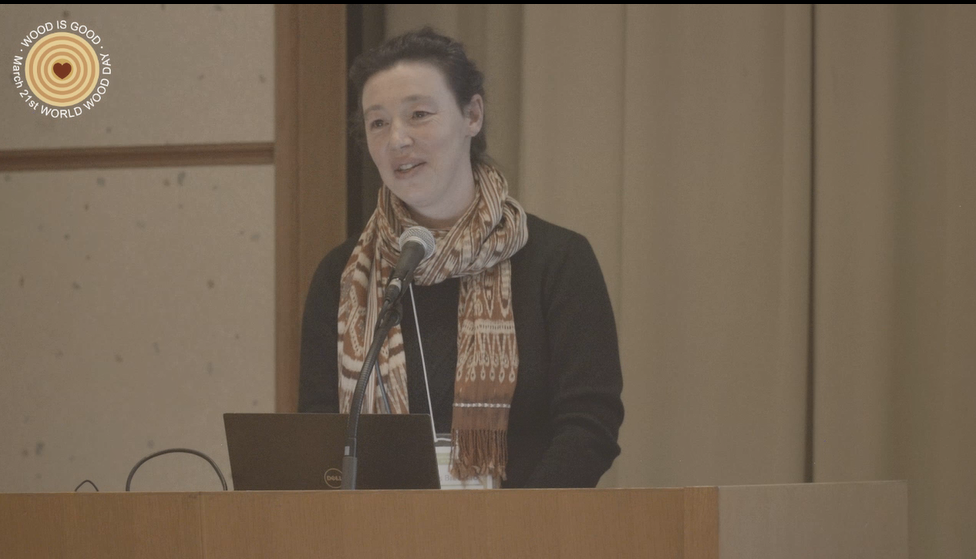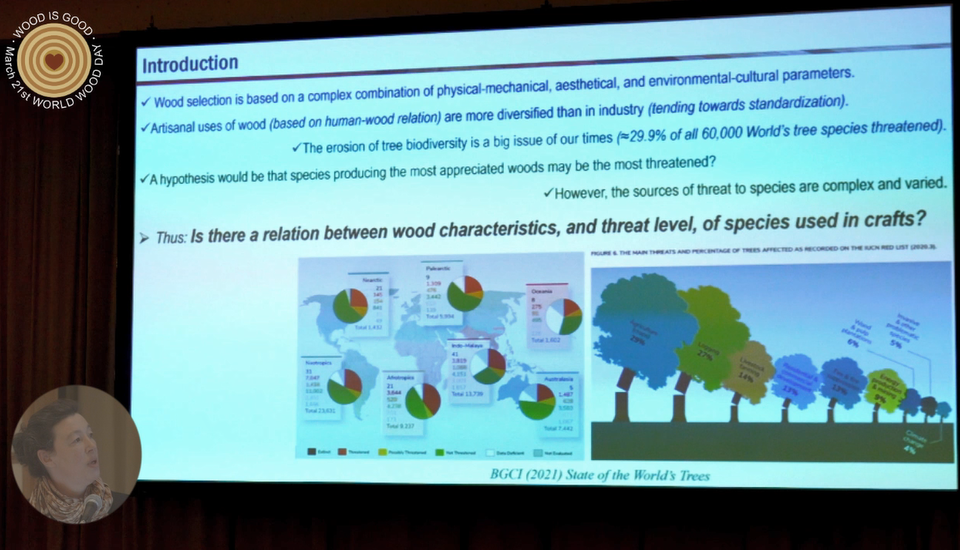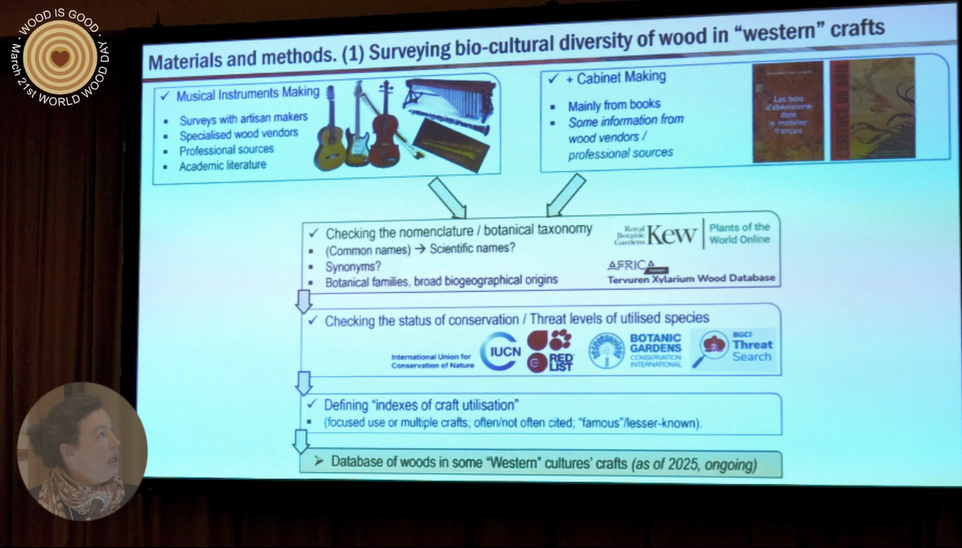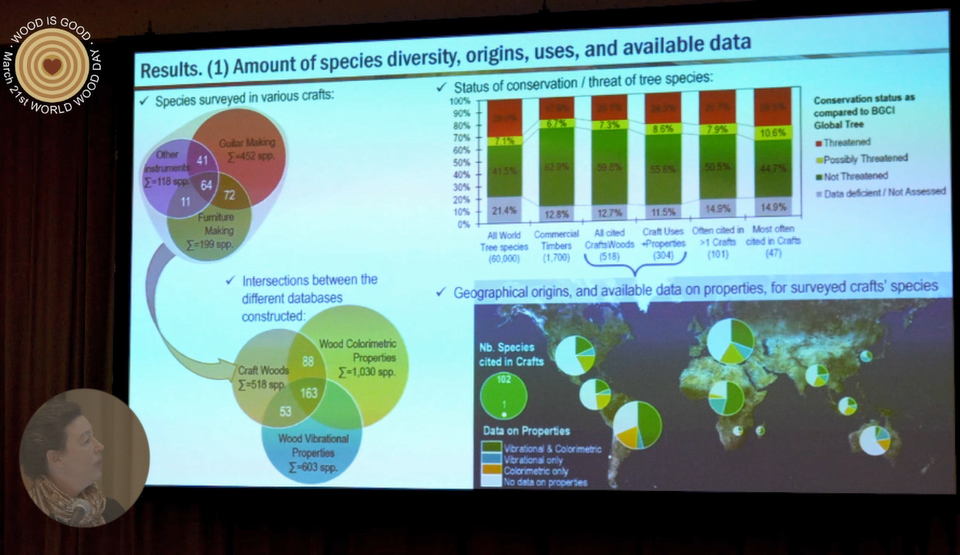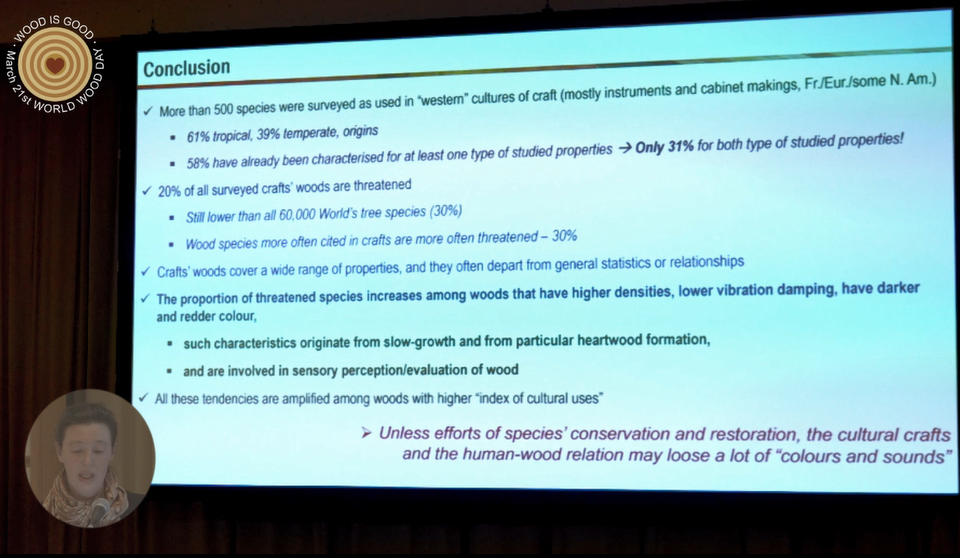报告题目:Are Wood Physics and Aesthetics Related to Threat Level for Species Culturally Important in Crafts?
会议名称:“2025世界木材日”研讨会暨第七届国际林联(IUFRO)林产品文化研究组讨论会
会议时间:2025年3月18日
报告嘉宾:Iris Brémaud
嘉宾单位:法国国家科学研究中心(CNRS, France)
报告摘要:
Wood selection is based on a complex combination of physical-mechanical, aesthetical, and environmental-cultural parameters. Artisanal uses of wood (based on human-wood relation) are more diversified than in industry (tending towards standardization). The erosion of tree biodiversity is a big issue of our times. A hypothesis would be that species producing the most appreciated woods would be the most threatened. However, the sources of threat to species are complex and varied (wood exploitation, agro-industry, urbanization, fire, climate change, shifts in land use and ecosystems, invasive species, etc.). Therefore: is there a relation between wood characteristics and level of threat on species?
This paper focuses on woods in European/Western crafts such as cabinet-making, musical instruments making, etc. The research combined three main methodologies: surveys (craftspeople and/or wood vendors); lab-characterizations of physical-mechanical-optical properties; meta-analyses of scientific and/or professional sources.
Circa 500 species were documented for their craft-uses. Experimental results on properties of c.180 craft species were obtained from tests in our laboratory. Original databases created from meta-analyses covered c. 500 species for vibro-mechanical properties, c. 1,000 species for colorimetry. The conservation/threat status was retrieved from IUCN and/or BGCI databases.
Analyses examine the proportion of threatened species, compared between all World tree species (c. 60,000), all commercial timber species (c. 1,700), and species specifically used in above-stated woodcrafts. Threat levels and craft uses were analyzed in relation to physical-mechanical and colorimetric properties. Results suggest that wood species having “exceptional” physical-vibrational and/or colorimetric properties, also tend to have the most concerning levels of threat, although not systematically. This worrying prospect will be discussed in the light of how crafts could adapt, by changing viewpoints and/or practices, and on how the situation of culturally important woods may help to raise public awareness on the global erosion of tree biodiversity.
责任编辑:iwcs25H


 256
256